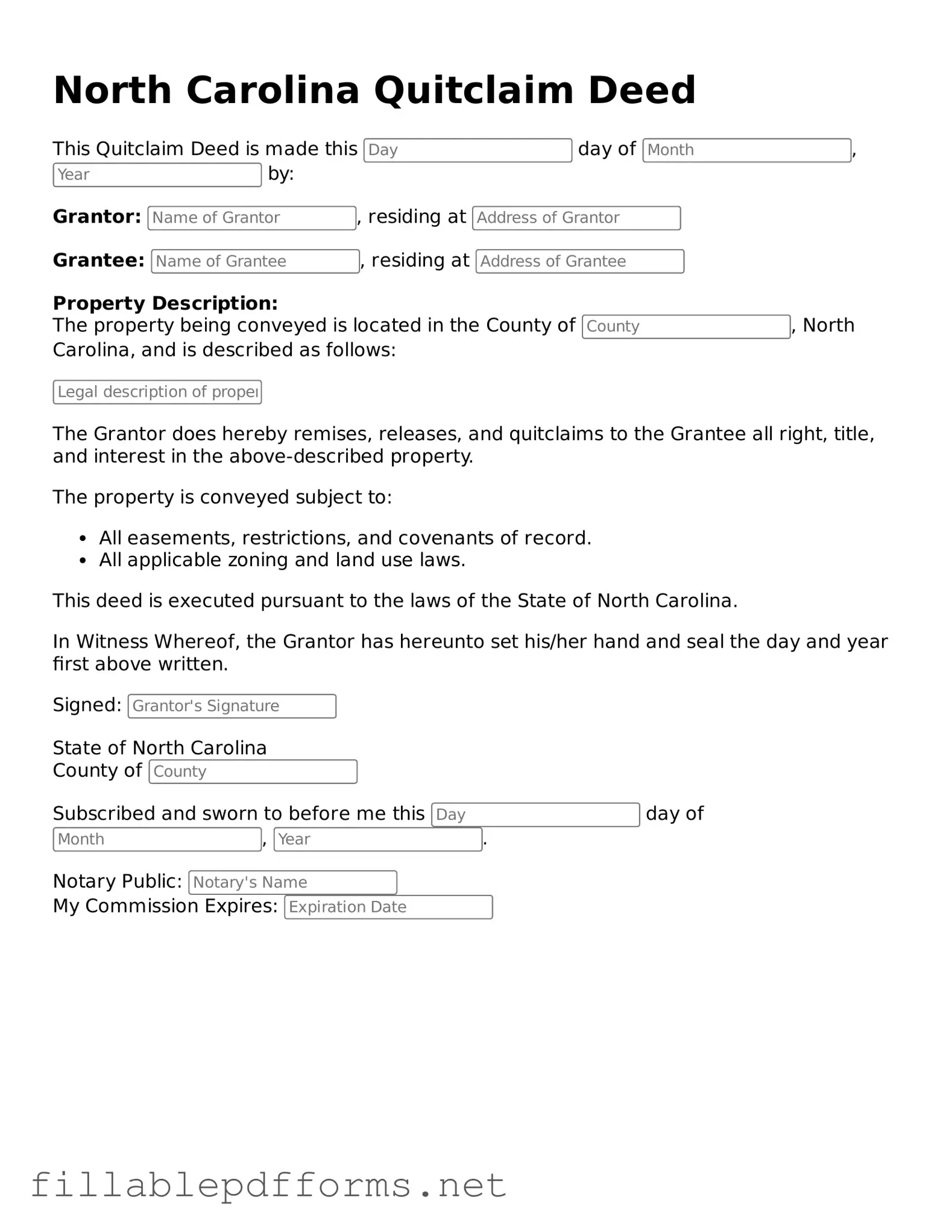In the realm of real estate transactions, clarity and simplicity are paramount, and the North Carolina Quitclaim Deed form embodies these principles. This essential document serves as a tool for property owners to transfer their interest in a property to another party without making any guarantees about the title's validity. It is particularly useful in situations where the parties know each other, such as family transfers or settling estates. The Quitclaim Deed allows for a swift transfer of ownership, often bypassing the lengthy processes associated with more formal deeds. While it may not offer the same protections as a warranty deed, it plays a crucial role in simplifying transactions and can be a valuable asset in estate planning or divorce settlements. Understanding the intricacies of this form, including the necessary elements such as the names of the grantor and grantee, a legal description of the property, and the execution requirements, is vital for anyone looking to navigate the property transfer landscape in North Carolina effectively. By grasping the nuances of the Quitclaim Deed, individuals can ensure that their property transactions are smooth and legally sound, paving the way for future ownership and investment opportunities.
